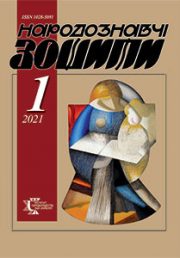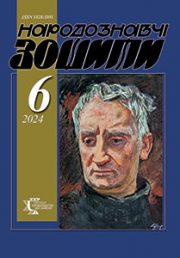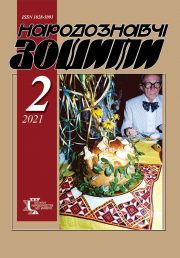The Ethnology Notebooks. 2018, № 4 (142), 955–966
UDK 930(477)»20»:[39–057.4Шумовський Ю.](092)
DOI https://doi.org/10.15407/nz2018.04.955
Received 27.05.2018
Osadtsa Marta – assistant of the department of fine arts and crafts and restoration
of the Vasyl Stefanyk Precarpathian National University.
Str. Shevchenka, 57, Ivano-Frankivsk, Ivano-Frankivsk area, 76000
Contacts: tel. 095 3025103; e–mail: martaosadtsa@gmail.com
Abstrakt. The problem of urban landscape in the paintings of Ivano–Frankivsk artists at the turn of the 20th and 21st century is covered. Attention is focused on the regional specificity distinction of the city landscape embodiment in the fine art of Ivano–Frankivsk region. The most characteristic plots are traced. Different stylistic tendencies, artistic com–positional features and plastic characteristics of urban compositions of Ivano–Frankivsk artists of the late 20th – early 21st century are revealed.
Keywords: urban landscape, painting, stylistic features, Ivano–Frankivsk region.
REFERENCES
Kuzenko, P. (2006). Polivektornist’ tvorchoho samovyrazhennia. Obrazotvorche mystetstvo, 2, 116–117 [in Ukrainian].
Mel’nyk, V. (1999, 4 liutoho). Bohdan Bryns’kyj: iak zhyty bez emotsij?!. Tyzhnevyk Halychyny, 5 [in Ukrainian].
Mel’nyk, V. (2005). Molytva ta ekstazy Bohdana Bryns’koho. Pereval, 3, 212–214 [in Ukrainian].
Khom’iak, L. (Ed.). (2013). Nas sim: B. Bojchuk, B. Bryns’kyj, B. Hladkyj, V. Lukan’, M. Pavliuk, V. Sandiuk, O. Chujko: kataloh. Ivano–Frankivs’k [in Ukrainian].
Petrova. O. (2004). Descho z arkhivu ta z suchasnoho mystetstva Ukrainy. In Mystetstvoznavchi refleksii: istoriia, teoriia ta krytyka obrazotvorchoho mystetstva 70–kh rokiv XX st. – pochatku XXI st. (pp. 87–107). Kyiv: Akademiia [in Ukrainian].
Mel’nyk, V. (Ed.). (2003). Stanyslavivs’ka Kolegiata: mizh mynulym i majbutnim (do 300–richchia pobudovy: 1703–2003). Materialy mizhnarodnoi naukovo–praktychnoi konferentsii (problemy doslidzhennia, restavratsii ta populiaryzatsii pam’iatok sakral’noi arkhitektury i mystetstva v Ivano–Frankivs’ku). Ivano–Frankivs’k: Misto–NV [in Ukrainian].
Mysiuha, B. Karpats’ki pejzazhi Volodymyra Sandiuka. Retrieved from: http://prostir.museum/ua/post/32870
Udina, T. Nevypravnyj romantyk Vasyl’ Kras’okha Retrieved from: http://www.volart.com.ua/art/krasoxa/.






